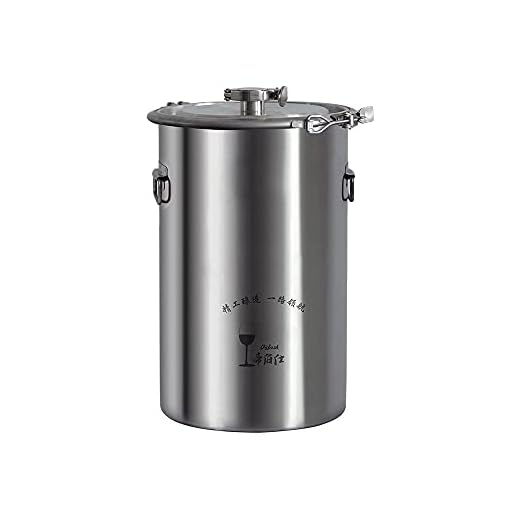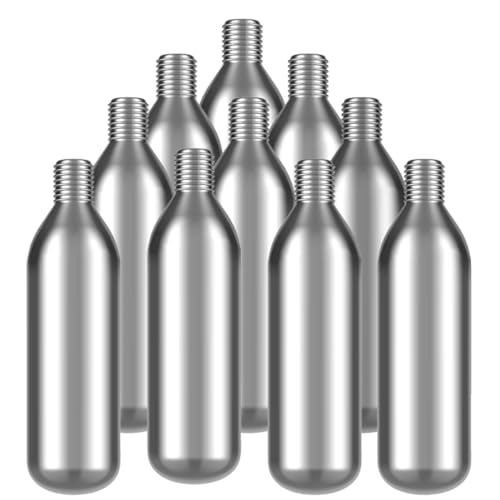



For an exquisite, pale beverage, the key lies in utilizing specific varieties known for their light-skinned fruit. Chardonnay, Sauvignon Blanc, and Pinot Grigio are among the top contenders that yield delightful results in this category. These selections are renowned for their ability to produce a range of flavors and aromas, from zesty citrus to floral notes.
Chardonnay, with its versatility, can be crafted into styles ranging from unoaked and crisp to rich and buttery. Sauvignon Blanc, on the other hand, offers a more herbaceous profile, often infused with notes of green pepper and passionfruit. Pinot Grigio, typically lighter, is celebrated for its refreshing acidity and hints of green apple and pear.
When considering the fermentation and aging processes, keep in mind that the absence of skin contact during vinification is essential for achieving the desired clarity and brightness. This technique accentuates the aromatic qualities and enhances the overall experience of the final product.
Types of Fruits for Light Vinification
For producing refreshing vintages, utilize fruits with a pale skin. The most renowned varieties include Chardonnay, Sauvignon Blanc, and Pinot Grigio. Each offers unique profiles, from crisp and fruity notes to more complex, herbal characteristics.
Chardonnay is versatile, excelling in various climates. In cooler regions, it develops bright acidity and citrus flavors, while warmer areas yield richer, buttery nuances.
Sauvignon Blanc thrives in regions like Marlborough, showcasing zesty lime and grapefruit flavors, often accompanied by herbal undertones. This variety is perfect for those seeking a lively and aromatic experience.
Pinot Grigio, particularly from Italy, presents a light and refreshing option with notes of pear and apple. It’s ideal for warm weather and pairs beautifully with seafood dishes.
While pale-skinned fruits are the primary choice, don’t overlook the potential of blending. Some producers experiment with slight skin contact from darker varieties, enhancing complexity without compromising the light character.
Seek out producers who focus on quality and terroir, as they often yield the most exciting and well-balanced results. Taste different selections to discover your personal favorites and enhance your culinary pairings.
Understanding the Role of Grape Skin Color
The skin hue of the fruit plays a pivotal role in determining the characteristics of the final product. While many might assume that only the skin type influences the outcome, the nuances are far more intricate. The phenolic compounds in the skin contribute not just to the color but also to the flavor profile and mouthfeel.
In winemaking, pressing methods are significant. For a lighter style, the fruit is typically pressed quickly, allowing minimal skin contact. This prevents the extraction of deeper tannins and color, resulting in a cleaner, crisper profile. Conversely, extended skin contact can lead to a more robust flavor, but this is less common in certain styles.
Different varieties exhibit varying levels of phenolic compounds. For instance, some green-skinned types might offer aromas of citrus and green apples, while others can yield floral notes. The key is in the selection of specific kinds that align with the desired taste and aroma. The variation in skin thickness also affects the overall structure. Thicker skins may impart more tannins, enhancing complexity.
| Skin Type | Flavor Notes | Pressing Technique |
|---|---|---|
| Thin | Citrus, Green Apple | Quick Press |
| Medium | Floral, Stone Fruit | Controlled Skin Contact |
| Thick | Berry, Spicy | Extended Skin Contact |
Understanding the influence of skin pigmentation allows for more informed choices in the production process. Each decision impacts the final profile, leading to a diverse array of expressions even among similar fruit types. By focusing on these details, one can elevate the tasting experience, creating a product that truly reflects the terroir and the winemaker’s vision.
Common White Wine Varieties and Their Traits
Among the most popular varieties for this type of beverage are Chardonnay, Sauvignon Blanc, and Riesling, each offering unique profiles and flavor experiences.
Chardonnay
Chardonnay can range from crisp and mineral to rich and buttery, depending on the region and vinification methods. It often exhibits notes of green apple, pear, and citrus, with a potential for oak aging that introduces vanilla and toasted flavors.
Sauvignon Blanc
This variety is known for its zesty acidity and vibrant flavors. Typical tasting notes include lime, green bell pepper, and tropical fruits. It thrives in cooler climates, enhancing its freshness and aromatic qualities.
Riesling
Riesling is celebrated for its floral aromas and versatility, ranging from bone-dry to lusciously sweet. The flavor profile includes stone fruits, honey, and sometimes an intriguing minerality. Its high acidity balances sweetness, making it a fantastic pairing with spicy dishes.
For those enjoying outdoor activities or seeking energy solutions, consider investing in the best solar generator for refrigerators, ensuring your wine remains perfectly chilled while you savor these delightful selections.
The Winemaking Process for White Wine from Red Grapes
To produce a crisp and refreshing beverage from dark-skinned fruit, the first step involves immediate pressing. This minimizes skin contact, allowing for a clean extraction of juice, which is crucial for flavor clarity.
Next, the juice undergoes a settling process to separate solids, ensuring a clear liquid that enhances the final product’s quality. After settling, fermentation begins, typically in stainless steel tanks. This method preserves the fruit’s inherent characteristics and acidity.
During fermentation, temperature control is vital. Cooler temperatures help retain delicate aromas and flavors, while warmer conditions can lead to a more robust profile. Yeast selection also plays a significant role; specific strains can enhance aromatic compounds and contribute to the overall taste.
Post-fermentation, it’s common to age the liquid in stainless steel or oak barrels. The choice of aging vessel impacts flavor and texture. Oak can impart subtle spice and creaminess, whereas stainless steel maintains freshness and vibrancy.
Before bottling, fining and filtration processes may be employed to achieve clarity and stability. This ensures that any unwanted particles are removed, leading to a polished final product.
Lastly, bottling should be handled with care to avoid oxidation, which can spoil the beverage. Proper corking and storage conditions are essential to maintain quality until the moment of enjoyment.
Impact of Grape Variety on Flavor Profile
The selection of specific types of vine significantly shapes the taste experience of the final product. Each variety contributes unique characteristics that influence aroma, palate, and overall profile.
- Chardonnay: Known for its versatility, this type exhibits flavors ranging from green apple to tropical fruits, often underscored by buttery notes due to malolactic fermentation. The terroir plays a crucial role, with cooler climates enhancing crispness and minerality.
- Sauvignon Blanc: This variety typically showcases high acidity and bright citrus flavors. Herbal and grassy notes are common, especially from regions like Marlborough. The balance of fruitiness and freshness makes it a favorite for pairing with seafood.
- Riesling: Often associated with sweetness, this type can also produce dry variants. Its floral aromas and stone fruit flavors, combined with high acidity, create a refreshing profile that pairs well with spicy dishes.
- Pinot Grigio: Characterized by its light body and crispness, this variety presents notes of pear and apple. Its clean finish makes it a popular choice for casual sipping and food pairings.
- Viognier: This type is known for its aromatic qualities, often revealing stone fruit and floral characteristics. Its rich texture and lower acidity create a different mouthfeel, making it suitable for pairing with richer dishes.
Understanding how each vine type interacts with the environment helps in selecting the right bottle to complement a meal or occasion. Flavor profiles can vary widely based on the region, climate, and winemaking techniques, making exploration of these aspects an exciting journey.
Regional Differences in White Wine Production
Different regions around the globe exhibit unique characteristics in the production of light-colored beverages, heavily influenced by climate, soil type, and local traditions. For instance, in regions like Burgundy, France, Chardonnay shines with its high acidity and mineral notes, while in California, the same varietal often expresses ripe fruit flavors and buttery textures due to warmer temperatures and different winemaking techniques.
In New Zealand, the cool climate allows Sauvignon Blanc to develop vibrant citrus and herbaceous qualities, setting it apart from its counterparts in warmer regions, where the fruit can become overly ripe and lose its signature freshness. Similarly, German Rieslings from the Mosel region are renowned for their balance of sweetness and acidity, often with a pronounced minerality that reflects the slate soils of the area.
Impact of Terroir
Terroir plays a critical role in shaping the flavor profiles of these beverages. The interaction between grapevines and their environment–including altitude, proximity to bodies of water, and vineyard practices–can dramatically alter the final product. For example, the cooler climates of the Loire Valley allow for a slower ripening process, resulting in wines that are crisp and aromatic, while warmer regions like Australia can produce lush, opulent styles with bold fruit characteristics.
Traditional vs. Modern Techniques
Winemaking methods also vary significantly across different regions. Traditional techniques in places like Champagne emphasize secondary fermentation, leading to complex flavor profiles, while modern approaches in areas like Napa Valley may focus on technological advancements to enhance extraction and fermentation. The choice between stainless steel and oak aging can further influence the taste and aroma, making each region’s approach distinct and integral to its identity.
Tips for Selecting Grapes for Home Winemaking
Choose varieties suited to your local climate. Some thrive in warmer regions, while others prefer cooler temperatures. Research your area’s growing conditions before deciding on a type.
Consider sugar content and acidity. High sugar levels often result in higher alcohol content, while balanced acidity enhances freshness. Aim for a harmonious blend that suits your taste preferences.
Evaluate Ripeness
Inspect the fruit closely. Look for a slight softness when squeezed, which indicates optimal ripeness. Taste a few samples to ensure sweetness and flavor complexity are where you want them.
Purchase from Reliable Sources
- Seek out local vineyards or farmers’ markets for fresh options.
- Check for organic or sustainably grown options to avoid pesticides.
- Ask about the history of the fruit: previous harvests, varietal characteristics, and any treatment received.
Keep an eye on the skin texture. A firm yet pliable skin typically signals healthy fruit. Avoid specimens with wrinkles or blemishes, as they may indicate overripeness or decay.
Consult with experts. Engage with local winemakers or join community groups. Sharing experiences can provide valuable insights into selection and handling techniques.
Experiment with blends. Mixing different varieties can create unique flavors and aromas, enhancing the overall profile of your finished product. Don’t hesitate to try unconventional combinations.
Lastly, document your process. Keep records of what you buy, the conditions during fermentation, and tasting notes. This practice helps refine your approach in future batches.








